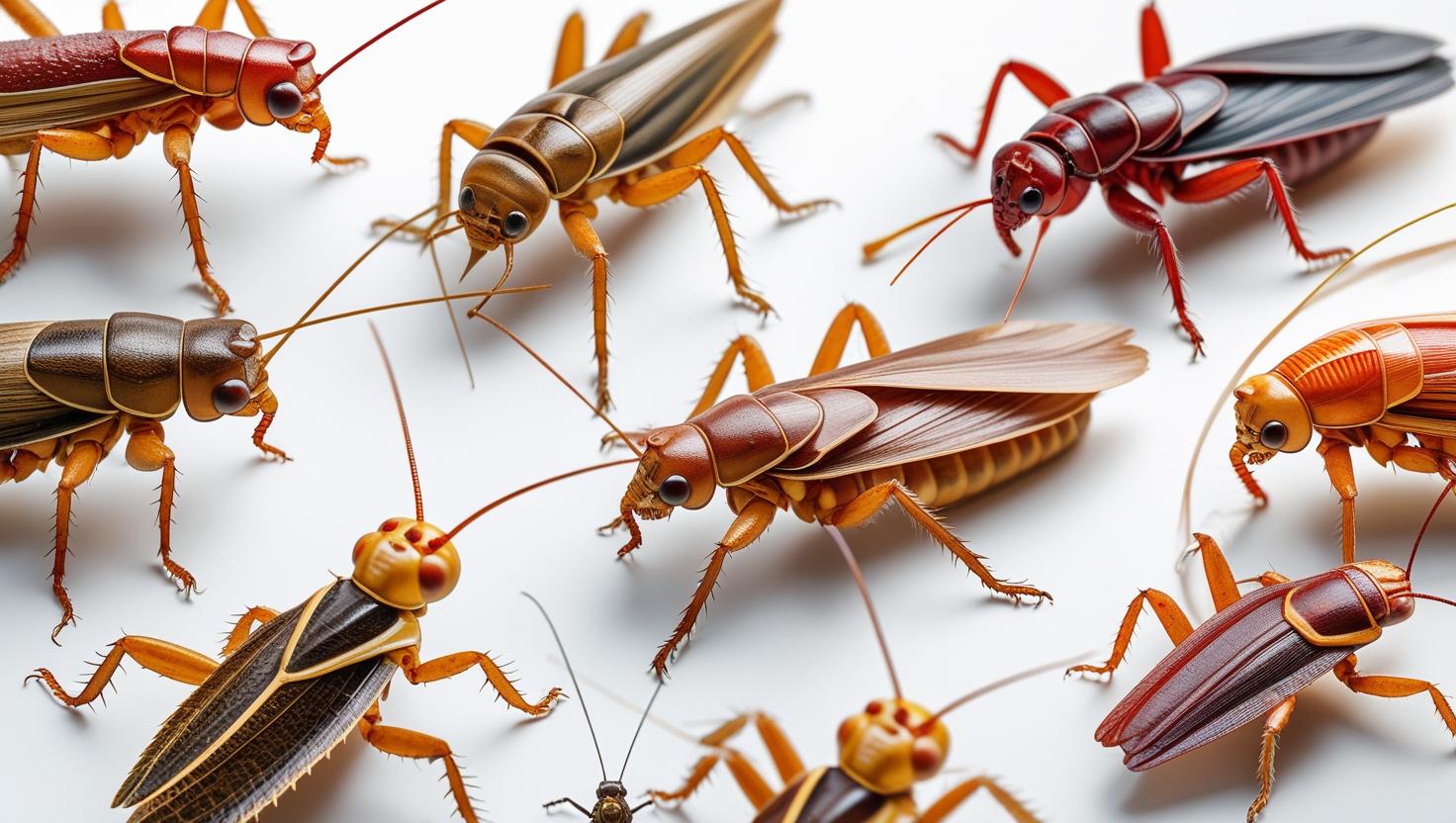Crickets are a common occurrence in San Antonio, often becoming more noticeable during certain times of the year. While they may seem harmless, their chirping can be disruptive, and large numbers can become a nuisance. At Urban Texas Pest Control, we understand the challenges of dealing with crickets. This comprehensive guide will provide you with effective strategies for cricket control and prevention, tailored to the specific conditions and cricket species found in our region.
Identifying Cricket Species in San Antonio
San Antonio’s climate provides a haven for several cricket species. Knowing which type you’re dealing with can help you target your control efforts:
- House Crickets: These are the most common crickets you’ll find indoors. They’re attracted to warmth and food sources and are known for their loud, persistent chirping, especially at night.
- Field Crickets: Field crickets are primarily outdoor dwellers, living in yards and gardens. However, they may venture inside seeking shelter, especially during dry spells or when temperatures fluctuate.
- Camel Crickets (Cave Crickets): These crickets prefer damp, dark environments. You’ll often find them in basements, crawl spaces, garages, or other moist areas. They have a distinctive hunched appearance and long antennae.
- Jerusalem Crickets (Woos): While less common indoors, Jerusalem crickets (also known as “child of the earth” or “woos”) can be a concern in gardens. They are large, wingless crickets with a somewhat intimidating appearance, but they are generally not aggressive.
Why Crickets Invade San Antonio Homes
Crickets aren’t just randomly showing up. They’re attracted to specific conditions around your property:
- Weather Conditions: San Antonio’s hot, dry summers and mild winters can drive crickets indoors seeking shelter from the heat, moisture, or even warmth during cooler periods.
- Food Sources: Crickets are opportunistic feeders. They’re attracted to food sources like crumbs left on floors, pet food left out overnight, and decaying organic matter in your yard.
- Lighting: Crickets are drawn to lights at night. Outdoor lights can inadvertently attract them towards your home’s exterior, increasing the chances of them finding their way inside.
- Moisture: Damp areas, such as leaky faucets, poorly drained yards, or damp basements, provide ideal conditions for some cricket species, particularly camel crickets.
- Vegetation: Dense vegetation, like overgrown bushes, piles of leaves, or tall grass, around your home’s foundation can provide shelter and attract crickets, making it easier for them to access your home.
Cricket Prevention Tips for San Antonio Homes
The best defense against crickets is a good offense. Here’s how to make your home less inviting:
- Seal Entry Points: Carefully caulk any cracks and crevices in your walls, floors, and around windows and doors. Pay attention to gaps around pipes and utility lines, as crickets can squeeze through surprisingly small openings.
- Manage Moisture: Fix any leaky faucets, pipes, or sprinklers promptly. Ensure proper drainage around your home’s foundation to prevent water from pooling, which attracts crickets.
- Proper Food Storage: Store food in airtight containers to prevent attracting crickets. Clean up spills and crumbs immediately, and avoid leaving pet food out overnight.
- Outdoor Lighting: Reduce the attraction of outdoor lights by using yellow or sodium vapor lights instead of bright white lights. These types of lights are less attractive to crickets and other insects.
- Vegetation Management: Trim bushes and shrubs away from your home’s foundation to reduce hiding places for crickets. Remove piles of leaves, debris, and firewood, as these can also provide shelter.
DIY Cricket Control: Home Remedies for Minor Infestations
For small cricket problems, you can try these DIY methods:
- Sticky Traps: Place sticky traps (like those used for mice) near areas where you see crickets, such as along walls or in dark corners. These traps can capture crickets and help you monitor the extent of the infestation.
- Dish Soap and Water: A simple spray of dish soap and water can kill crickets on contact. Mix a few tablespoons of dish soap with water in a spray bottle and spray the crickets directly.
- Baits: Commercial cricket baits are available at most hardware stores. These baits contain an insecticide that attracts crickets, which then ingest the poison and die. Follow the label instructions carefully and keep baits away from children and pets.
- Vacuuming: For a quick and easy way to remove a large number of crickets, use a vacuum cleaner. This is especially effective for removing crickets clustered in a specific area.
How to make a simple DIY cricket trap:
- Take a shallow dish or container (like a pie tin).
- Mix equal parts molasses and water.
- Pour the mixture into the dish, leaving about an inch of space at the top.
- Place the trap in an area where you’ve seen crickets.
- The crickets will be attracted to the sweet smell and drown in the mixture.
When DIY Isn’t Enough: Calling in the Cricket Control Experts
While DIY methods can be helpful for minor cricket problems, there are several situations where professional pest control is recommended:
- Persistent Infestations: If you’ve tried DIY methods and the cricket problem persists, it’s a sign that the infestation is more established and requires professional treatment.
- Large Infestations: Large numbers of crickets can be difficult to manage effectively without specialized equipment and treatments. Professionals can quickly and efficiently reduce the cricket population.
- Property Damage Concerns: While crickets don’t typically cause significant structural damage, they can damage plants or fabrics in large numbers. If you’re concerned about property damage, professional intervention may be necessary.
- Peace of Mind: Professional pest control provides peace of mind and ensures effective, long-term cricket management, allowing you to enjoy your home without the nuisance of these pests.
Professional Cricket Control Services in San Antonio
Professional cricket control services in San Antonio typically involve a comprehensive approach:
- Inspection and Identification: A trained technician will thoroughly inspect your property to identify the cricket species, locate potential breeding areas, and assess the extent of the infestation.
- Targeted Treatments: Professionals use a variety of specialized treatments to effectively control crickets, including:
- Baits: To attract and eliminate crickets.
- Sprays: To create a barrier and kill crickets on contact.
- Insect growth regulators: To disrupt cricket development. These treatments are carefully applied to target cricket activity while minimizing impact on your home and family.
- Exterior Barrier Treatments: Creating a protective barrier around your home’s perimeter can help prevent crickets from entering and reduce future infestations.
- Source Reduction: Professionals may recommend changes to your landscaping or moisture management practices to reduce cricket attraction and prevent recurring problems.
Conclusion
Crickets can be a nuisance, but with the right strategies, you can effectively control and prevent them in your San Antonio home. By implementing prevention tips, utilizing DIY methods for minor problems, and calling on the expertise of Urban Texas Pest Control for more significant infestations, you can enjoy a more peaceful and pest-free environment. Contact us today for a free cricket control consultation!
Frequently Asked Questions
What are the different types of crickets in Texas?
The different types of crickets in Texas include house crickets, field crickets, camel crickets (aka cave crickets), and Jerusalem crickets (aka Woos).
Why are there so many crickets outside my house?
There can be several factors that are causing the influx of crickets outside your home. These include weather conditions, food sources, lighting, moisture, and vegetation.
How do I keep crickets out of my house?
Cricket prevention strategies include sealing entry points, managing moisture, storing food properly, reducing outdoor lighting, and managing vegetation.
What is the best way to get rid of crickets?
Some of the best DIY methods to get rid of crickets include sticky traps, dish soap and water, baits, and vacuuming.
How much does professional cricket control cost?
The average cost of getting rid of crickets is $175-$325, with the average homeowner spending around $250 on a single visit from a professional. However, this can vary based on factors such as the severity of the cricket infestation and the size of the property.
How do pest control companies get rid of crickets?




